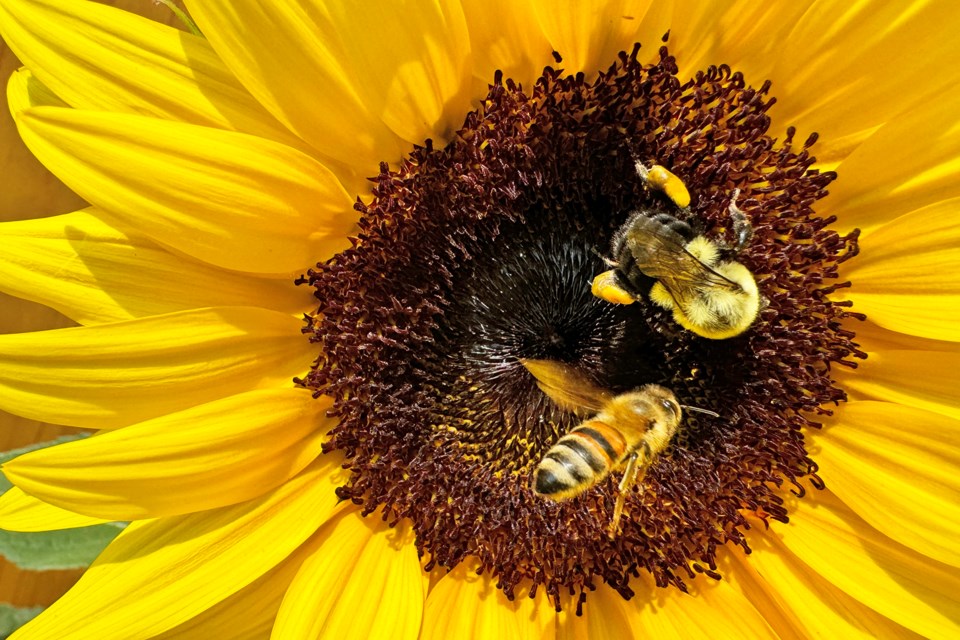BarrieToday welcomes letters to the editor at raymond@barrietoday.com or via the website. Please include your full name, daytime phone number and address (for verification of authorship, not publication).
The more I read about the incredibly important role our precious pollinators play in the future existence of all of us, the more concerned I become about their alarming decline all over the world.
It is hard to fathom that our health, well-being and future existence here on Earth is dependent on tiny, insignificant-looking — and sometimes annoying — insects flitting from flower to flower.
We need pollinators as 450,000 species of plants depend entirely on pollinators
It is estimated that pollinators provide upwards of $217 billion to the world economy.
Pollinator’s rights here in Ontario alone are responsible for $897 million worth of agricultural crops per year.
Many of the more than 850 native bee species here in Canada face extinction.
On Earth Day, 2019 the UN provided us with an alarming report – our bumblebee population had declined an astounding 89 per cent. Bumblebees are master pollinators.
It turns out one of the best food sources for pollinators are native plants. Native plants are extremely adaptive as they have evolved over thousands of years to become drought and pest resistant, and readily grow in poor soil conditions.
Unfortunately, many domesticated flowers grown in our gardens have been bred for beauty and many are no longer able to produce nectar.
Here in Ontario, we have more than 270,000 kilometres of roads with roadsides dominated by a riot of naturalized and native flowers such a yarrow, alfalfa, chamomile, chicory, coltsfoot, dandelions, goldenrod, hop clover, mullein, New England aster, Queen Anne’s lace, red clover and shepherd’s purse — which turn out to be incredible food sources for our pollinators.
When planting your garden, consider adding as many native plants as possible, such as blue vervain, cup plant, ironweed, cone flower, blanket flower, black-eyed Susan, coreopsis, aster, blanket flower, borage, butterfly bush, butterfly weed, wild bergamot, false sunflower, tall bell flower, and grey-headed coneflower.
Honeybees need evergreen trees. Worker honey bees will go in search of resin from evergreen trees. They tear the resin from trees and mix it with the wax from the beehive. This antibiotic mixture makes the hive waterproof and the mixture will be used to entomb any invading insects. So you can help pollinators not only by planting native flowers but also by planting coniferous trees, according to American Bee Journal.
The City of Barrie became a Bee City in 2019. Since that time, the city has implemented a number of measures to increase food sources and safe habitats for pollinators. This includes reducing the number of mowing cycles per summer, increasing the number of naturalized spaces, replacing planting areas with native species, supporting the planting of native trees, restoring and enhancing the shoreline restoration and creating an in-house native flower-enhanced seed mix.
This past week was International Pollinator Week, which is an annual event celebrated across the world to support the future existence of pollinators around the world. This year, the pollinator of the week is the squash bee. It is a solitary bee which is considered one of the most important floral specialist pollinators in agriculture here in North America.
I would respectfully suggest that every week should be pollinator week as one mouthful of food out of three depends on pollinators such as bees, butterflies, birds, beetles, bats, flies and moths.
Gwen Petreman
Barrie

.png;w=120;h=80;mode=crop)

